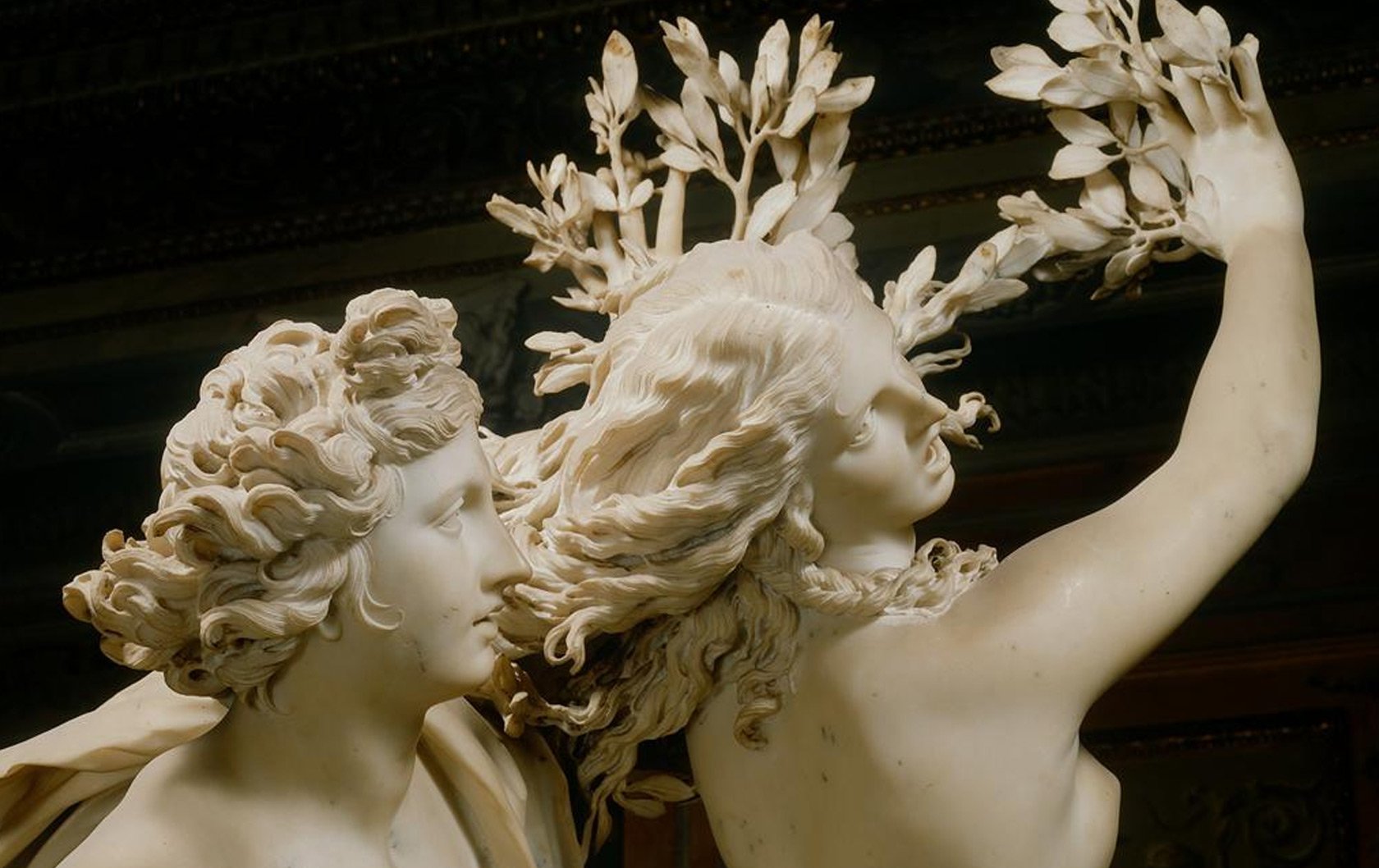Baroque can be described as emotion-filled, delicately detailed, and theatrically composed representations. The art of this period has a trend of expressing real human emotion instead of depicting idealistic figures often found in the works from the renaissance. The Catholic Church brought this period of art during the reformation. The Council of Trent, an ecumenical council held from 1545-1563, began the counter-reformation as it addressed the criticisms of the Church. A significant factor in choosing this style was that it had ancient qualities and made the subjects relatable to connect the viewer.
Sculpture (Bernini)
Gian Lorenzo Bernini was one of these artists commissioned by the Church leaders at the time to communicate through art proposed by the council. He worked in many mediums. However, I chose to focus on his sculptures for this post. He worked in creating statues, some depicting stories from the Bible while examining movement and dramatic gestures as shown in Bernini’s “David.”

He also similarly depicted moments from Saint’s lives. In each of his works, there are visual representations of raw emotions conveyed by the figures, especially in the faces of each subject. This draws on the viewer’s ability to read the emotions and empathize with the subject to relate to the stories being conveyed. For example, in his “Ecstasy of St. Teresa”, he quotes one of St. Teresa’s descriptions of her visions. Her reclined position and the emotions shown in the face convey this ecstasy described visually.


“In his hands, I saw a great golden spear, and at the iron tip there appeared to be a point of fire. This he plunged into my heart several times so that it penetrated to my entrails. When he pulled it out I felt that he took them with it, and left me utterly consumed by the great love of God. The pain was so severe that it made me utter several moans. The sweetness caused by this intense pain is so extreme that one cannot possibly wish it to cease, nor is one’s soul content with anything but God.”
Not only did he create work for the Church but also stories and myths from ancient Greece. One example of this is his statue of “Apollo and Daphne.” Depicting the moments of Daphne changing into a tree while trying to escape Apollo. The details and the emotion depicted in the face and hands carry the movement and drama of the scene.


Paintings (Caravaggio)
Another artist that was commissioned with these ideas was Michelangelo Merisi Caravaggio. Similar to Bernini’s sculptures, Caravaggio’s paintings carried the same emotional weight. Depicting stories from the Bible, he used extremely dark backgrounds to contrast and dramatic poses of the figures to capture the emotions of each subject and the story in one moment.

The Entombment of Christ was created by Caravaggio in 1603–1604 for the second chapel on the right in Santa Maria in Vallicella. As seen in this painting there is drama, dramatic gestures by the figures that give the vision of a theatrical still.
The younger woman with her hands up is reacting to her grief in an open display. Where the other two women are more composed. The men’s stances also convey the weight they are carrying.
Carrying on the Theatrical theme, in Caravaggio’s Sacred Love Versus Profane Love there is a visual battle. This shows dramatic contrast in the lighting and the poses of the figures shows superior and cowering with vast emotion captured. There is a sense of defeat conveyed by the figures laying and a peace conveyed by the standing angle figure.


Caravaggio’s work also continues spanning into Greek mythology and stories depicting them in dramatic scenes that can be related to by the viewer. Narcissus is one of the Greek myths where he falls in love with his own reflection. Caravaggio captures this moment with his use of lighting, especially with the reflection, and in the pose, he puts Narcissus in with his face entranced with what he was seeing.
Update 01/18/2022
During the trip I saw many of the works by Bernini and Caravaggio. Many of the works that I saw were ones that I researched for this post. For Bernini I was very impressed with seeing one of the works that I did not research that much before going. This piece was Bernini’s first lifesize comission. It depicts “Aeneas, Anchises, and Ascanius” and because of this piece Bernini was said to be the height of talent and skill. Being able to portray man at these three stages of life was how to prove ones skill in realistic portrayment. I personally believe that Bernini achieved this in this sculpture.

For Caravaggio, there were not many of his paintings that I haven’t researched. I picked this one because it stood out to me and it was different from his other works that I looked at before. This portraying of the head of medusa painting on a shield conveyed so much symbolism and clever craftsmanship. Caravaggio took the myth and used one of the crucial elements of the story and mad it the canvas. For not only was a shield used by Perseus to succeed in killing Medusa, but Medusa’s decapitated head was mounted to the front of Athena’s shield. This was an inventive technique to portray the symbolism within the story into the art.

Citations:
- Harbison, Robert. Reflections on Baroque, Reaktion Books, Limited, 2002. ProQuest Ebook Central, https://ebookcentral.proquest.com/lib/snorcol-ebooks/detail.action?docID=618756.
- Harbison, Robert. Reflections on Baroque, Reaktion Books, Limited, 2002. ProQuest Ebook Central, https://ebookcentral.proquest.com/lib/snorcol-ebooks/detail.action?docID=618756.
- https://arthistoryproject.com/artists/gian-lorenzo-bernini/apollo-and-daphne/